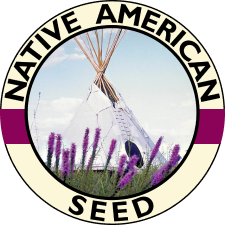Sometimes we tend to forget about the smaller things in life that really do make the world go round. Just as wildlife has suffered from increased fragmentation of land through urbanization, so have bees, beetles, & butterflies. Not long ago, beekeepers would ask farmers to set beehives near croplands in exchange for some honey. Now farmers are paying beekeepers to bring in hives for their crops. Hives are trucked all over the nation. A third of U.S. food supply depends on pollinators.
Why the decline in pollinators? Could it be the increased use of pesticides... or light pollution to the night sky? Whatever the reasons, many organizations are offering helpful information and incentives for people to plant pollinator habitats. Pollinators like plants that produce pollen, nectar, habitat, shelter and safety from predators. Pollinators need nectar throughout most of the year, not just in spring. Planting diverse native wildflowers will benefit honey bees & native bees.
Thank you for the encouragement from many of our customers, especially Becky Bender and the Texas Beekeepers Association, along with ongoing efforts from other pollinator resources, such as the Xerces Society.
- BLACK-EYED SUSAN
- CLASPING CONEFLOWER
- LEMON MINT
- PURPLE PRAIRIE CLOVER
- LARGE FLOWER COREOPSIS
- INDIAN BLANKET
- LANCELEAF COREOPSIS
- PURPLE CONEFLOWER
- ILLINOIS BUNDLEFLOWER
- SMOOTH WHITE PENSTEMON
- STANDING CYPRESS
- WHITE PRAIRIE CLOVER
- BUSH SUNFLOWER
- PARTRIDGE PEA
- SLEEPY DAISY
- BERGAMOT
- LAZY DAISY
- TALL GOLDENROD
- SLENDER MOUNTAIN MINT
- GREENTHREAD
- BUTTERFLY WEED
- SWAMP MILKWEED
- PRAIRIE GOLDENROD
- AMERICAN BASKETFLOWER
- COMMON SUNFLOWER
- RATTLESNAKE MASTER
- CUTLEAF EVENING PRIMROSE
- STIFF GOLDENROD
- GAYFEATHER
- MAXIMILIAN SUNFLOWER
- BLUE WILD INDIGO
- HUISACHE DAISY
- FROSTWEED
- TEXAS BLUEBONNET
- COWPEN DAISY
- GOLDEN-WAVE
- WINECUP - ANNUAL
- TAHOKA DAISY
- PRAIRIE VERBENA
- CUTLEAF DAISY
- MEALY BLUE SAGE












